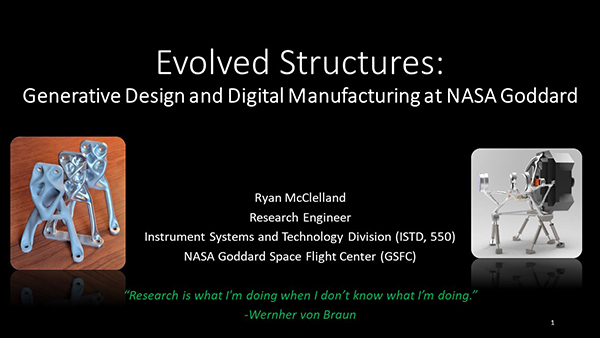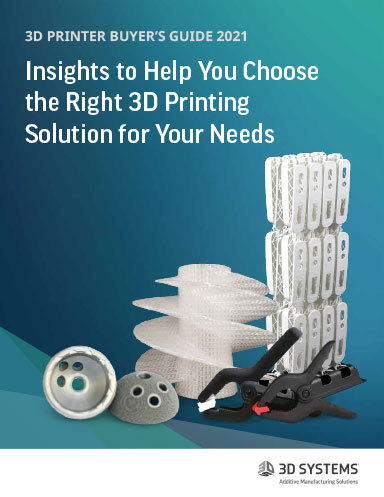DE Design & Simulation Summit Preview of Generative Design and 3D Printing
How Generative Design and 3D Printing Help NASA Build a Lighter Telescope Part; NASA Research Engineer Discusses Use of AM Part in Space Telescope

In DE Design & Simulation Summit: Additive Manufacturing Track
Latest News
October 3, 2022
In the upcoming DE Design & Simulation Summit: Additive Manufacturing Track, NASA Goddard Space Flight Center's Research Engineer Ryan McClelland will discuss his development of an AM-printed part for NASA EXCITE, an infrared telescope to observe exoplanets. McClelland uses a combination of generative design (GD) software and additive manufacturing (AM) to produce the one-of-a-kind bracket. He also made different versions of the same part using traditional machining. In his talk he will discuss the differences between human-engineered designs and the surprising twist (literally) the GD software uses to handle the expected load, and the unexpected beauty in AI-derived design. McClelland's work is part of NASA Goddard’s Evolved Structures process.
“Currently CNC is the best fabrication technique for most aerospace parts. However, AM will unlock new potentials as the tools mature,” he observed. While the current AM parts are limited in size and scale, he foresees making larger, greater bone-like structures in the future, bringing spacecraft lightweighting to new height.
McClelland identifies GD and digital manufacturing as the key enablers of advancement. In his experience, applying these technologies to spaceflight structures resulted in 2x-4x improvements in stiffness/mass and 5x-10x reduction in development time and cost.
McClelland also shared his findings in a previous DE article, titled “Meet Your New Design Consultant: Generative Design” (April 2022).
Subscribe to our FREE magazine, FREE email newsletters or both!
Latest News
About the Author
Kenneth Wong is Digital Engineering’s resident blogger and senior editor. Email him at [email protected] or share your thoughts on this article at digitaleng.news/facebook.
Follow DE





